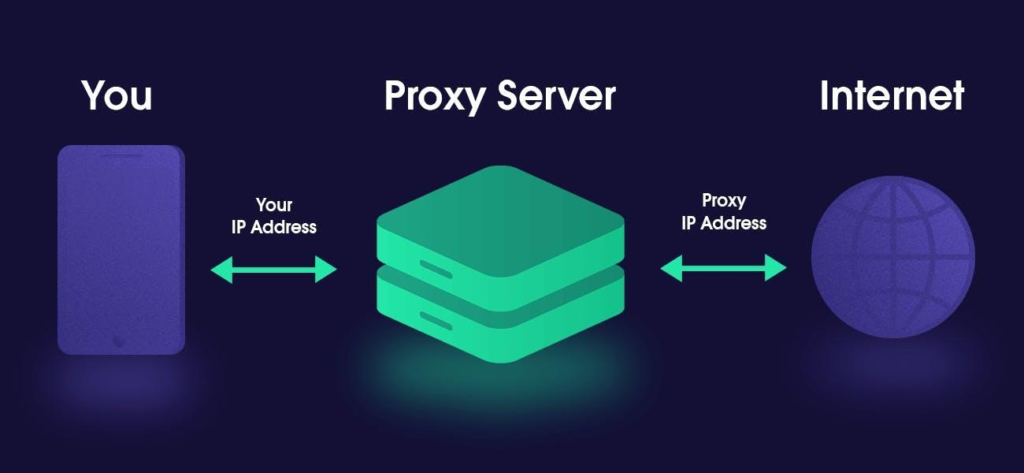
Introduction to 185.63.2253.200 and Its Internet Footprint
In today’s digitally connected world, every device that connects to the internet is assigned a unique IP (Internet Protocol) address. One such IP that has raised eyebrows recently is 185.63.2253.200. At first glance, this string of numbers may appear harmless, but cybersecurity professionals and curious internet users have flagged it for suspicious behavior, potential involvement in malicious activities, and questionable network origins. Whether you’re an IT professional, a concerned individual, or simply someone eager to understand the digital terrain better, exploring the context and concerns around IP address 185.63.2253.200 is both timely and vital.
Understanding how IP addresses function is crucial. An IP address not only identifies a device on the internet but can also hint at its location, the ISP it’s connected through, and what kind of services or threats it might be associated with. When specific IPs are noted for recurrent bad behavior, they are frequently added to public and private blacklists. Let’s explore why 185.63.2253.200 has been making appearances in forums, blocklists, and security logs across the globe.
IP Address Breakdown: What Is 185.63.2253.200?
Before delving into the potential risks associated with 185.63.2253.200, it’s important to understand what makes up an IP address. Typically, IPv4 addresses consist of four numbers separated by periods, each ranging from 0 to 255. However, 185.63.2253.200 contains a segment “2253” which is invalid in traditional IPv4 formatting. This implies one of two things: either this is a typographical error or a deliberately obfuscated address used to mask malicious intent.
This raises the first red flag: the IP does not conform to proper IPv4 standards. Invalid or spoofed IP addresses are commonly used in phishing attempts, cyberattacks, and spamming activities. A non-existent IP like this may have been referenced in spam headers or malicious scripts to deceive victims or evade detection from security tools.
Suspicious Origins and Hosting Providers Behind the IP
If we correct the invalid portion and analyze IPs close in range such as 185.63.253.200 (a valid format), we can begin tracing their activities and hosting data. IP ranges that include such numbers often belong to hosting providers known for hosting anonymized content, including bulletproof hosting. Bulletproof hosting services are notorious for turning a blind eye to illegal or unethical online activities, including malware distribution, phishing sites, and adult content with little regulation.

Tracing similar IPs back to their origin often links them to Eastern European or Russian data centers, many of which have been reported for allowing illicit use. Some cybersecurity trackers and DNS monitoring tools have flagged IPs in this subnet for being associated with suspicious downloads and fake login pages. This makes such addresses a point of concern for system administrators and everyday users alike.
Role of IP Reputation in Cybersecurity
An IP address’s reputation is one of the primary indicators cybersecurity systems rely upon. Tools like AbuseIPDB, VirusTotal, and Cisco Talos analyze millions of reports daily to determine whether an IP address behaves maliciously. 185.63.2253.200 or similar variants might appear in their records if involved in:
- DDoS (Distributed Denial of Service) attacks
- Botnet activities
- Email spam propagation
- Credential stuffing
- Malicious redirect scripts
If your firewall or antivirus flags this IP, it’s likely due to its poor reputation across global monitoring systems. It is essential not to ignore such warnings. Administrators often block entire subnets based on one IP’s behavior, highlighting the importance of maintaining strong digital hygiene.
Indicators of Compromise Related to 185.63.2253.200
There are various tell-tale signs that your network or device may have interacted with a malicious IP like 185.63.2253.200. These are commonly referred to as Indicators of Compromise (IoCs). Here are a few to watch for:
- Frequent failed login attempts from unrecognized locations
- Sudden spikes in outbound traffic
- Unusual DNS queries to unknown IP addresses
- Detection of malicious executables linked to remote IPs
- Browser redirects to strange websites
If any of these are spotted during a routine security audit or through endpoint detection software, further analysis should be initiated immediately. Not all activity is human-initiated—bots and scripts often probe networks using obfuscated IPs.
Social Engineering and Fake URLs Involving This IP
Attackers often use rogue IPs within URLs to trick users. Instead of using a domain like www.fakebank.com, a phishing email might include something like http://185.63.2253.200/login to trick recipients into thinking it’s a legitimate service. This bypasses some email filters and creates an illusion of technical authenticity.
In some cases, attackers use embedded IP addresses with obfuscation layers (like hexadecimal or encoded characters) to bypass anti-spam protections. This technique is frequently seen in phishing and spear-phishing attacks targeting corporations, banks, and personal email accounts. Educating users about these risks remains a cornerstone of effective cybersecurity awareness.
The Importance of Reverse DNS Lookup
A critical technique in analyzing potentially dangerous IP addresses is reverse DNS lookup. It attempts to associate a domain name with an IP. For an IP like 185.63.2253.200 or its corrected version, reverse lookup can reveal whether it’s tied to a legitimate domain or appears as “no PTR record” — often indicating untrustworthy activity.
IP addresses with no valid reverse DNS entry are often blacklisted faster, particularly in mail delivery contexts. Email servers will reject emails from such IPs under suspicion of spam or spoofing. Reverse lookups help pinpoint whether the sender is legitimate, further assisting in email security practices.
Security Tools for Tracking IP Behavior
The cybersecurity world is armed with numerous tools to track IPs and their digital trails. Some of the most widely used platforms include:
- AbuseIPDB – For community-sourced abuse reports
- Shodan – For mapping internet-connected devices
- VirusTotal – For scanning URLs and IPs for threats
- IPVoid – For analyzing IP reputation
- MXToolbox – For mail server blacklists
Using any of these tools on IPs like 185.63.2253.200 allows IT professionals to determine whether they should be blocked, monitored, or reported. These platforms aggregate data from various sources, improving visibility into malicious infrastructure.
Possible Legal Implications and Data Breaches
An IP tied to illegal or unethical online behavior may become part of an ongoing cybercrime investigation. Authorities like Interpol or national cybersecurity agencies often investigate IP addresses associated with data breaches or distributed attacks. If your organization is found communicating with flagged IPs, it could trigger compliance audits or data protection concerns.
Under regulations like the GDPR, organizations are required to ensure their networks remain secure and uncompromised. If 185.63.2253.200 interacts with your systems and results in a data leak, the legal consequences could include hefty fines and reputational damage.
How Firewalls and IDS Handle Suspicious IPs
Modern firewalls and Intrusion Detection Systems (IDS) are configured to detect and prevent communication with flagged IP addresses. If 185.63.2253.200 is listed in known threat feeds, it will likely be automatically blocked. However, not all systems update in real-time, and manual blocklisting may still be necessary.

Moreover, anomaly detection within IDS helps identify suspicious behavior, even if the IP itself hasn’t been flagged yet. Machine learning algorithms can detect irregularities in traffic patterns, alerting administrators before full-scale breaches occur.
Role in Distributed Attack Infrastructures
Malicious IPs are often not isolated. They’re part of broader attack infrastructures like botnets or ransomware delivery networks. For instance, 185.63.2253.200 could be one node in a massive global network used to spread malware or execute coordinated DDoS attacks. Disabling one node may not dismantle the entire operation, but it contributes to curbing its spread.
Tracking and reporting such IPs help disrupt cybercriminal ecosystems. Security researchers depend on this data to compile blacklists, trace origins, and understand malware behavior in the wild.
Challenges in Tracing Ownership
One reason IPs like 185.63.2253.200 remain active in malicious activities is the difficulty in tracing real ownership. Cybercriminals use VPS services, proxy chains, and false registrations to mask identities. WHOIS lookups might return incomplete or spoofed information.
Additionally, IP addresses may be part of dynamic pools, reassigned frequently by ISPs. This creates uncertainty in determining whether an IP was used maliciously by intent or by an infected user.
How to Report Suspicious IPs
If your system encounters malicious activity from 185.63.2253.200, it’s advisable to report it. Platforms like AbuseIPDB and Spamhaus accept community reports. Here’s a basic process:
- Document logs showing the interaction
- Capture screenshots or packet dumps
- Submit reports to relevant databases
- Notify your ISP if it threatens your network integrity
Community involvement helps create safer online environments by contributing data that protects others.
Preventive Measures for Individuals and Organizations
Whether you’re a business or individual, protecting your network against rogue IPs is essential. Here are five actionable steps:
- Regularly update firewalls and antivirus definitions.
- Employ threat intelligence platforms for real-time alerts.
- Block IPs and ranges associated with bad reputations.
- Train employees to spot phishing attempts and IP-based threats.
- Use VPNs to encrypt and anonymize your outbound IP visibility.
These proactive measures reduce vulnerability exposure, strengthening your digital defenses.
Final Thoughts on the Relevance of IP Intelligence
While the average user may never consider IPs more than numerical identifiers, cybersecurity experts know better. IPs like 185.63.2253.200 might signify misconfigured systems—or they might be active players in the digital threat landscape. Understanding the tools, techniques, and implications of interacting with such addresses is not just technical diligence—it’s digital survival.
Proper threat intelligence, careful monitoring, and community cooperation can neutralize these threats before they escalate. Knowledge about even a single IP can unlock the mystery behind massive security incidents.
5 Key Takeaways
- IP address 185.63.2253.200 is not a valid IPv4 format and may be obfuscated to hide intent.
- Similar IP ranges are often linked to malicious hosting services and suspicious activities.
- Community reporting and tools like AbuseIPDB can help track and block harmful IPs.
- Cybersecurity awareness, including reverse DNS checks and firewall rules, is crucial.
- Legal consequences may arise if such IPs interact with corporate infrastructure.
Conclusion: Vigilance Is the First Line of Defense
In the case of 185.63.2253.200, whether it’s a typographical error or a strategic disguise, one thing remains clear: suspicious IPs must be treated with caution. The internet is a battleground where cybercriminals constantly evolve, and understanding their tactics—starting with IP analysis—is vital. By using the right tools, educating users, and staying informed, both individuals and organizations can protect their digital environments from the ripple effects of a single, seemingly meaningless IP address. Digital literacy begins with knowing what lurks behind every packet—and often, danger starts with a number.
Frequently Asked Questions (FAQs)
Q1: Is 185.63.2253.200 a real IP address?
No, 185.63.2253.200 is not a valid IPv4 address. One of its octets exceeds the allowed range (0–255), suggesting either a typo or obfuscation.
Q2: How can I block suspicious IP addresses like this?
You can block them via firewall settings, host files, and network management tools. Use services like AbuseIPDB to track and report them for global awareness.
Q3: What tools help analyze malicious IP addresses?
Top tools include Shodan, VirusTotal, AbuseIPDB, IPVoid, and MXToolbox. These services provide reputation analysis, blacklisting status, and connection history.
Also Read This: 𝗦𝗢𝗗𝗭𝗜𝗨: 𝗧𝗵𝗲 𝗠𝗲𝗮𝗻𝗶𝗻𝗴, 𝗖𝘂𝗹𝘁𝘂𝗿𝗲, 𝗮𝗻𝗱 𝗠𝗼𝗱𝗲𝗿𝗻 𝗥𝗲𝗹𝗲𝘃𝗮𝗻𝗰𝗲 𝗼𝗳 𝗮 𝗣𝗼𝘄𝗲𝗿𝗳𝘂𝗹 𝗪𝗼𝗿𝗱




